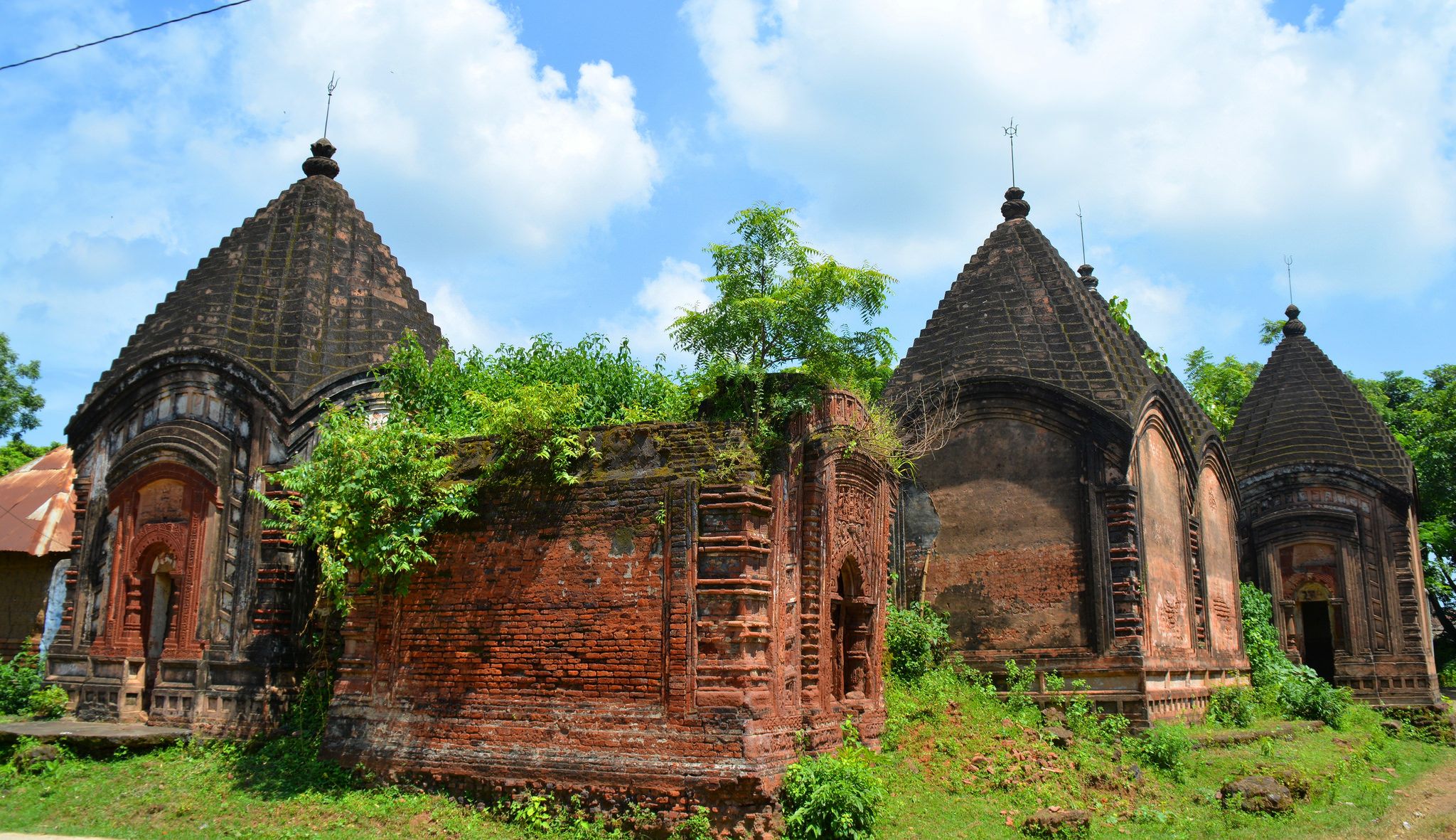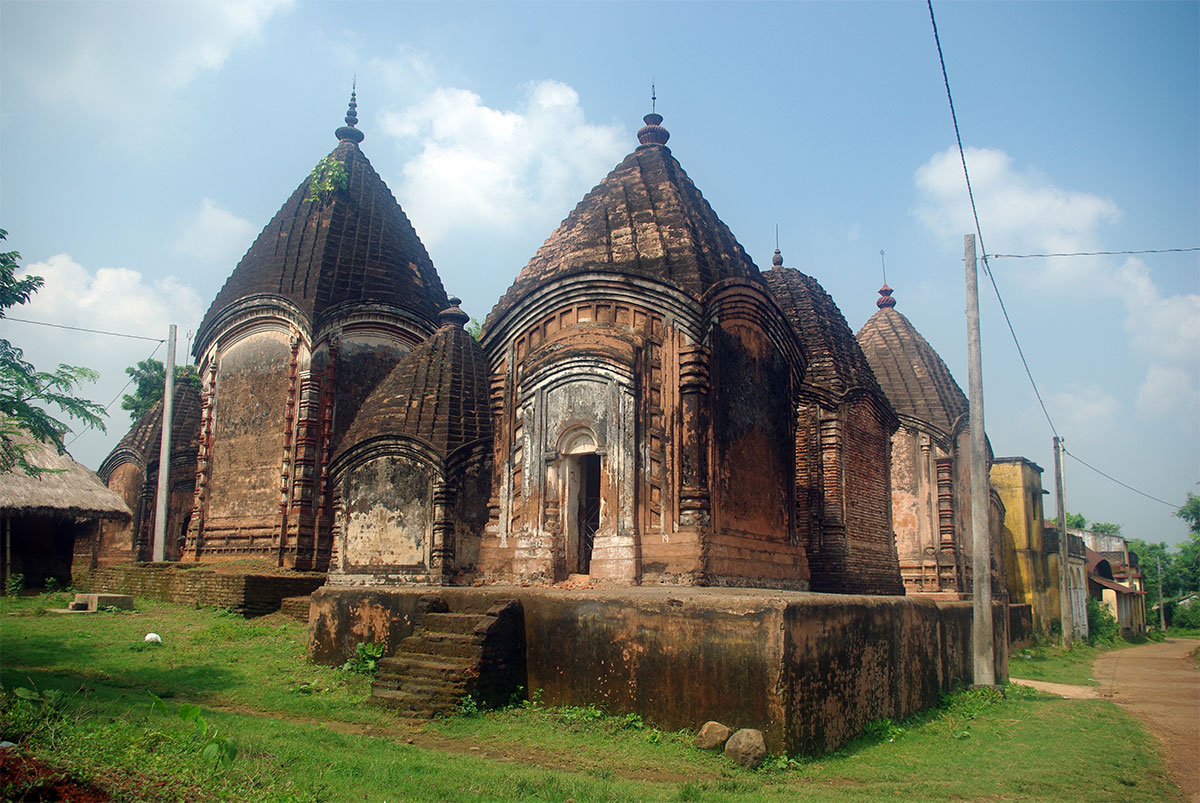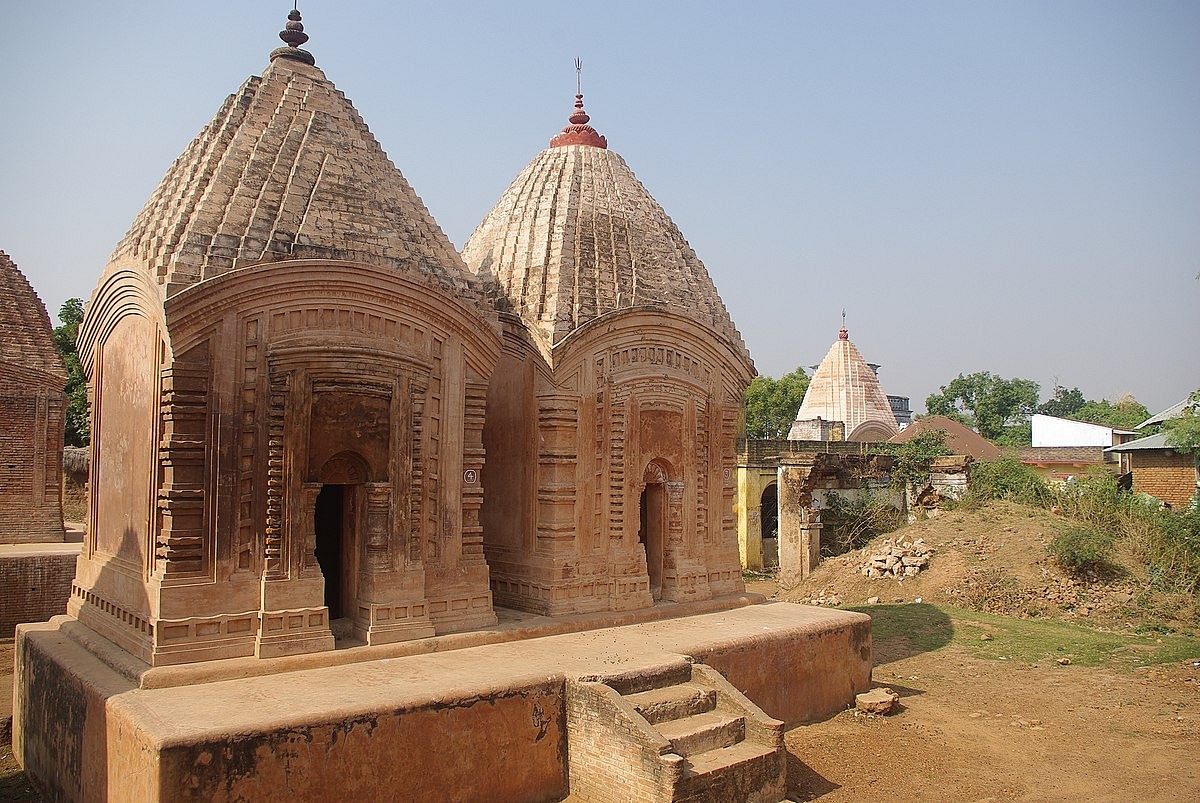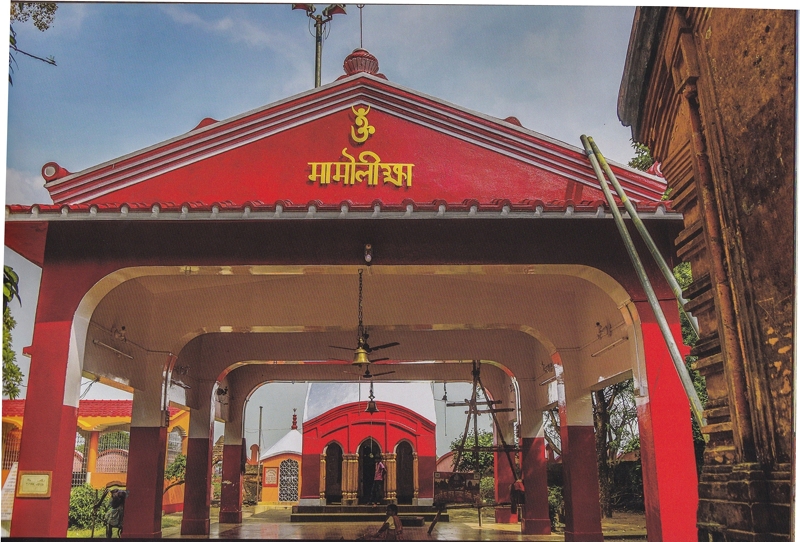More Coverage
Twitter Coverage
Satyaagrah
Written on
Satyaagrah
Written on
Satyaagrah
Written on
Satyaagrah
Written on
Satyaagrah
Written on
Join Satyaagrah Social Media
The forgotten temple village of Bharat: Maluti

“In religion, India is the only millionaire – the one land that all men desire to see, and having seen once, by even a glimpse, would not give that glimpse for all the shows of all the rest of the globe combined.”- Mark Twain. Bharat is the land of mystique. We undeniably have the most diversified indigenous culture and people belonging to multiple ethnicities. It would hence, be an overstatement to speak about the rich history that we possess, and the legacy that we are carrying of our forefathers.
Hindu Dharma, arguably the oldest and the third most practiced religion in the world today, traces its origin to the land of the Sindhu, or Indus river, as it is called today. In the lines of this fact, we find uncountable temples and temple complexes spread across the country. Most of them have been constructed and funded by the ruling dynasties or the heads of villages and janapadas.
The temples right from the oldest ones found, depict stories from the epics or puranas and other mythology, whereas some also depict the social structure and activities of the era in which they had been constructed. They, besides being the places of worship, also used to function as sites of religious and social gatherings, as well as for some influential families, the signs of power. It therefore, doesn’t come as a surprise that a temple village will exist in a country like ours, rich in heritage and spirituality.
 |
Out of the innumerable temples and temple-based cities spread across the country, lies one tiny village, hidden amongst almost nothing, cradled in the red soil and laterite stretches of Jharkhand, the land of bushes. Maluti, or Malooti, is a little village near Shikaripara town of Dumka district.
The place had for long remained in oblivion, mostly due to its distance from the nearest bus road as well as railway station. The village could only be accessed if one had a private vehicle to ferry him for 5.2 km from the nearest point on Rampurhat-Dumka road (NH114A) or from Rampurhat railway station, 14 km away. Villagers mostly chose to rely on their feet to ply from the highway till the village, and some privileged ones could afford bicycles.
The villagers weren’t concerned much of a livelihood, as most of them were self-sustaining farmers and animal rearers. But deep down, they had lost hope of their upliftment, given the apathy of the then ruling parties towards the village and its adjoining Santhal Parganas, then in erstwhile Bihar.
There were overhead cables drawn for electrifying the village, but there were no signs of electricity. Not surprisingly, there weren’t any toilets or baths in homes, and people followed the age-old tradition of taking a community bath at the village ponds.
All of this, despite the fact that the area had an important aerodrome in its vicinity, where fighter jets were a regular sight on wartime days. It is still used for landing of private jets carrying ministers and other people of importance. Sadly, the buildings and rooms which once used to be the barracks for the army, now stand reduced to skeletons, devoid of roofs and windows and doors, all having been looted away by goons.
The situation changed with the turn of the new decade in the 21st century. Electricity began lighting up homes in the village from around 2012, although its supply remains fairly irregular till date. People dug up handpumps in their lawns for water, and built toilets. Every home now owns at least one mobile phone, if not many (Compare this to the fact that even 10 years ago, we had to walk to one of the public calling booths out of the total two, to call people from land-phones).
The recent government had taken an extra foot forward in 2017-18 to fit taps in every house so as to provide purified water to every home.
Having been said thus, it stood as a stark contrast that even after such hardships and low living standards, the literacy rate of the village was far better as compared to that of the state’s, both Bihar and Jharkhand. It still stands at 75.42%, a good 9.01% greater than the literacy rate of Jharkhand, according to data obtained from 2011 census. The village’s rich architecture stands testimony to the great legacy that this region carries even till this day.
 |
The village area has a total of 72 old temples, said to be built under the Baj Basanta dynasty. It is heard that the king of the Nankar (tax-free) state had constructed 108 temples in incipient stage, a number very common to Hindu culture. Later generations of the family could not maintain such a huge number of temples and most of them were left uncared for. With time, as many as 36 temples got dilapidated and finally they crumbled.
Only 72 out of the lot could survive. Given the socio-economic condition of the village, the surviving 72 had also been walking the path of destruction, until 2014-15, when the then state government took hold of the situation, and recruited the Archaeological Survey of India (ASI) to conduct required surveys and start with the restoration of the temples, to the nearest likeness of what they looked originally.
This awakening came especially after 2010, when in a report titled Saving Our Vanishing Heritage, Global Heritage Fund identified the Maluti temples as one of 12 worldwide sites nearest to, and on the verge of irreparable loss and damage, citing insufficient management as primary cause.
The restoration work is still ongoing, and the village now dreams of becoming a center of tourist attraction, with its newly constructed gateways and guesthouses, revamped roads, as well as better supply of electricity.
 |
Maluti came into mainstream lore in the fifteenth century as the capital of nankar raj (tax-free kingdom). Historically, one Basanta Ray, the son of a poor Brahmin of Katigram village was awarded the kingdom by Sultan Alauddin Hussan Shah of Gauda (1495–1525), in lieu of him being able to catch the pet hawk (Baj) of the Sultan and giving it back to Him. Hence, the king was then called Raja Baj Basanta.
The primitive capital of the Baj Basanta dynasty was in Damra; eventually, it was shifted to Maluti. The royal family was very pious. Their Rajguru was a Dandi Sanyasi of Sumeru Math, Kashi (Varanasi). Since then the head of Sumeru Math who is called Rajguru became the preceptor of all the descendants of the King Baj Basanta.
Even today, the Swamiji Rajguru from Sumeru Math Varanasi spends about a month time at Maluti every year, around the time of Holi, when he gives sermons and preaches the Adi way of living. Numerous people from nearby areas throng the village to receive Swamiji’s blessings during this time.
How Maluti — the capital of Baj Basanta dynasty — turned out to be a ‘temple city’ is also an interesting story. Instead of constructing palaces, the Rajas built temples. The dynasty was eventually broken into parts (tarafs), but each taraf kept building temples, competing with the others.
In the end, it turned out be a unique temple village. Inscriptions in Proto-Bengali on the temples show that they were named after women, a much progressive fact during the then dark medieval times. These ‘Tarafs‘ have till this date, maintained their individual identities, and one Kali puja in the village also calls itself the ‘chhoy taraf’, or the six-taraf Kalipuja.
Another Kalimandir is called the ‘Rajar bari‘ or the ‘King’s Puja’, whose descendants are the actual lineage of Raja Basanta Ray of Maluti.
But Maluti, might not be in this name, existed long before becoming the kingdom of the tax-exempted capital of the Baj Basanta dynasty. It was once revered as a great seat of learning. Mention of Maluti — known as Gupta Kashi in ancient times — is found during as early as the Shunga dynasty (185 BC – 75 BC), whose founder was Pushyamitra Shunga (185 BC – 151 BC).
It was at Maluti that the king of Pataliputra performed his Ashvamedh Yajna. Later Vajrayani Buddhists, followers of Tantrik rituals, settled here. It is said that Adi Shankaracharya, on his way to Varanasi, had stopped over at Maluti. And controversially, it is here that he launched his mission against Buddhism.
The Dandiswami of Varanasi’s Sumeru Math still comes here once a year as part of the ritual that began with Adi Shankaracharya, as discussed earlier. Some historians also say that Maluti is the first place where the Vedic upheaval started.
No particular style of architecture of temple-building has been followed in case of the Maluti temples, like the Nagara, Vesar or Dravida. The specialist artisans who were very possibly from Bengal had given shape to numerous designs while constructing the temples of Maluti.
The temples present the burnt clay architecture (terracotta), which is pretty common to the eastern region of Bharat, including the infamous Bishnupur temple complex in Bankura, West Bengal.
Interestingly, Maluti also has a different connection with Bankura, both tracing their rulers to the Malla dynasty, hence being called as the Mallabhum area. In fact, some historians trace the name of the village to Mallahati, which over the years, has shortened and compacted to become Maluti.
The temples, like other Hindu temples, portray various scenes from Hindu mythology including the Ramayana and the Mahabharata.
 |
Maluti is known for the annual sacrifice of over a hundred goats on Kali Puja, besides one buffalo and a sheep, and over time, animal activist groups have often strongly and rightly looked down at this activity. Kali Puja is the biggest festival of the place. The village decks up in candles and diyas, and very recently, colorful LED bulbs.
Half of the village’s population resides elsewhere, and some even abroad. Kali puja is the time for their homecoming as well. The homes are cleaned and newly colored, mud-houses get a new layerng of mud. The village comes alive with a whole new spark.
The idols are constructed specific to its own mandir (kalitola), and hence, the idols differ from one kalitola to another. Every kalitola worships the exact same idol every year, despite the fact that the idol is drowned on the visarjan day every year. The village, in total worships eight kalis; each kali is assigned with a different giving than the other.
The Kalipuja is actually such a huge affair there, that it has been frequently compared with the pomp and vigour of Durga Puja festivities in Kolkata. Fireworks are burnt on the evening of the Puja, and the whole area, including people from adjoining villages gather on the ground to watch them go off.
The notorious animal sacrifice follows the night-long Puja, and the animals are actually offered to the goddess on behalf of particular individuals or families. After the brutal sacrifice is over, the offerors gather to collect their slain animals as prasad, and the meat is cooked in their homes with great respect.
It is said that visiting all the eight kalis of the village on the morning following the puja brings good luck, and hence, the whole village comes down on to the streets right from the dawn to pay their homage to the eight kalis (or aat-kali, as they are collectively called) of the village.
Looking at the huge number of temples of different gods and goddesses at Maluti, one can easily imagine that at one point of time, the village was prosperous with very high degrees of religious zeal. Today the religious fervor has come down comparatively but the tradition has not been lost. It can be seen from the ardent puja and seva of numerous idols representing various deities, both males and females.
In this village Vedic gods like Narayana are worshipped in the form of Saligram shila, Shiva in the form of Shiva Linga, and goddesses like Durga, Kali, Lakshmi and Saraswati are also worshipped with great enthusiasm. At the same time, people worship Maa Manasa and Dharmaraj, two local gods equally.
The coordination between the Vedic and local (Pouranic) gods are unique. Above all, goddess Mauliskhya, the tutelary deity of the royal dynasty receives the highest adoration from all corners. She draws a good number of pilgrims throughout the year.
The main temple of Maluti is that of Ma Maulikshya, who is the main deity of the Royal family of Baj Basanta Ray and the Guardian Goddess of Maluti. Interestingly, this goddess does not find mention in the Hindu scriptures, but is found in Vajrayana Buddhism as the Goddess Pāndora, the Shakti (female strength) of Amitava. Vajrayani Buddhists regard Amitava as Dhyani Buddha.
Dhyani Buddhas are said to have come from the Adi Buddha or Vajradhar. Gradually the Buddhist influence of this region tempered down and Ma Maulikshya become a Goddess of Hindu tantra.
Around 1857, Swami Bamdev (or Sadhak Bamakhyapa), one of Bengal’s greatest spiritual leaders, came here to become a priest, but failed because he couldn’t memorize Sanskrit mantras. He was made to cook food for the puja. During his 18-month stay in Maluti, Bamakhyapa used to spend most of his time here at the Maulikshya temple.
Here, he was first blessed. Then, he moved to Tarapith. His trident is still preserved at Maluti. Maulikshya is said to be the elder sister of the goddess Ma Tara of Tarapith, because the renowned yogi Bamakhyapa attained his Siddhi (enlightenment) from Maulikshya first and then from Tara; and her Puja is done every day before the Puja at Tarapith starts. The idol of Maulikshya Maa is the most ancient idol ever found in Maluti.
 |
The word Maulikshya has come from the union of two words – Mauli and iksha. Mauli means mastak (head) and ikshya denotes darshan (vision). Actually the goddess has only a well carved stone head fixed on the wall; the rest of her body is absent. The lustrous idol has an ever-smiling face. It is made out of laterite stone, which has been nicely chiselled. She is placed on a platform inside the garva-griha or sanctum sanatorium. Goddess Maulikshya is worshipped as the Singha Vahini Durga.
However, the deity has no resemblance with the idol of Durga as has been described in different religious texts. The idol of Maulikshya faces westward. Her colour is red. A lotus-designed halo is present behind the idol.
So taking all these factors into account, there exists a probability, that the idol had been established long back by the Buddhist monks inside the forests long before the village Maluti was built as the capital of the tax-exempted kingdom. The original ancient temple was said to be in ruins when the royal family members discovered the idol.
The original temple was perhaps destroyed by an earthquake. As the temple collapsed on the idol, the nose of the idol was damaged. So the idol was covered with layer of gala. The current temple was re-constructed on the original foundation.
A number of miraculous stories are heard about Maulikshya. Many people have seen during the night, a flame springing out from the Hom-Kunda (pit for receiving the fire for oblation, or the havan – kund) all of a sudden. Descendants of Kamala Kanta, a great ascetic saint, say that he was thrown out in the midnight while he was in deep meditation before the deity.
Another story relates that sometimes at night, the sound of sweeping with broom-stick, at different places at a time, is heard from inside the boundary of the lonely temple. The temple complex has two shiv mandirs and a Bamdev mandir. It also houses a separate building for cooking of the bhog, and also a naat-mandir. Recently, a Hanuman Mandir has also been constructed on the fringes of the temple complex.
People traveling to this village, might as well include tours of the nearby Dumka town as well as the Massanjore Dam, for a perfect weekend getaway. The roads provide great scenic beauty, while the town has a beautiful old-world charm that captivates the souls of tired city-dwellers.
Today Maluti has been under trials of recovery. Yet, it is still endangered by insufficient management of the old temples, and threatened by natural disasters. There are two schools, one out of them strictly caters to the Santhals. Even today, the village lacks any college or for the sake of it, any high school as well.
The will power of the villagers and their desire to acquire knowledge has resulted in many of the sons and daughters of this ancient village to secure prestigious jobs and migrate elsewhere. The village lives on, in its semi-ruined state, with some old souls breathing, and directing newer generations to reach greater heights.
 Support Us
Support Us
Satyagraha was born from the heart of our land, with an undying aim to unveil the true essence of Bharat. It seeks to illuminate the hidden tales of our valiant freedom fighters and the rich chronicles that haven't yet sung their complete melody in the mainstream.
While platforms like NDTV and 'The Wire' effortlessly garner funds under the banner of safeguarding democracy, we at Satyagraha walk a different path. Our strength and resonance come from you. In this journey to weave a stronger Bharat, every little contribution amplifies our voice. Let's come together, contribute as you can, and champion the true spirit of our nation.
 |  |  |
| ICICI Bank of Satyaagrah | Razorpay Bank of Satyaagrah | PayPal Bank of Satyaagrah - For International Payments |
If all above doesn't work, then try the LINK below:
Please share the article on other platforms
DISCLAIMER: The author is solely responsible for the views expressed in this article. The author carries the responsibility for citing and/or licensing of images utilized within the text. The website also frequently uses non-commercial images for representational purposes only in line with the article. We are not responsible for the authenticity of such images. If some images have a copyright issue, we request the person/entity to contact us at This email address is being protected from spambots. You need JavaScript enabled to view it. and we will take the necessary actions to resolve the issue.
Related Articles
- Jagannath Temple administration issues clarification on proposed sale of temple lands
- An Artisan Heritage Crafts Village: Indigenous Sustainability of Raghurajpur
- Biggest Wonder of the World : Kitchen of Lord Shri Jagannath
- Shri Murudeshwar Temple: Home To The World’s Second Tallest Shiva Statue
- Culture And Heritage - Meenakshi Temple Madurai
- A new symbol of Hindutva pride, Shri Kashi Vishwanath Temple Corridor
- Gita Press Gorakhpur – Bringing Sacred Hindu Texts to Every Hindu Home
- Why India’s temples must be freed from government control
- Lakshmi Narasimha Swamy Temple, Antarvedi, Andhra Pradesh
- Dear NSUI, Bhagat Singh And Subhas Chandra Bose Admired Savarkar And His Ideas
- Why Hindus not claiming their temples back from the Government control: Is pro-Hindu govt will always be in power
- Srikalahasti Temple, Dakshina Kailash
- अथ रामचरितमानस प्रकाशन कथा: गीता प्रेस, गोरखपुर ने 1938 से रामचरितमानस का प्रकाशन शुरू किया
- Narasimha Rao govt brought places of Worship Act as a hurdle in reclaiming ancient Hindu heritage destroyed by Muslim invaders
- Mahakal Temple in Ujjain to get expanded complex with Rs 714 crore in such a way that there will be a feeling of grandeur and divinity: Another reason for devotees to celebrate after Kashi Vishwanath corridor
























